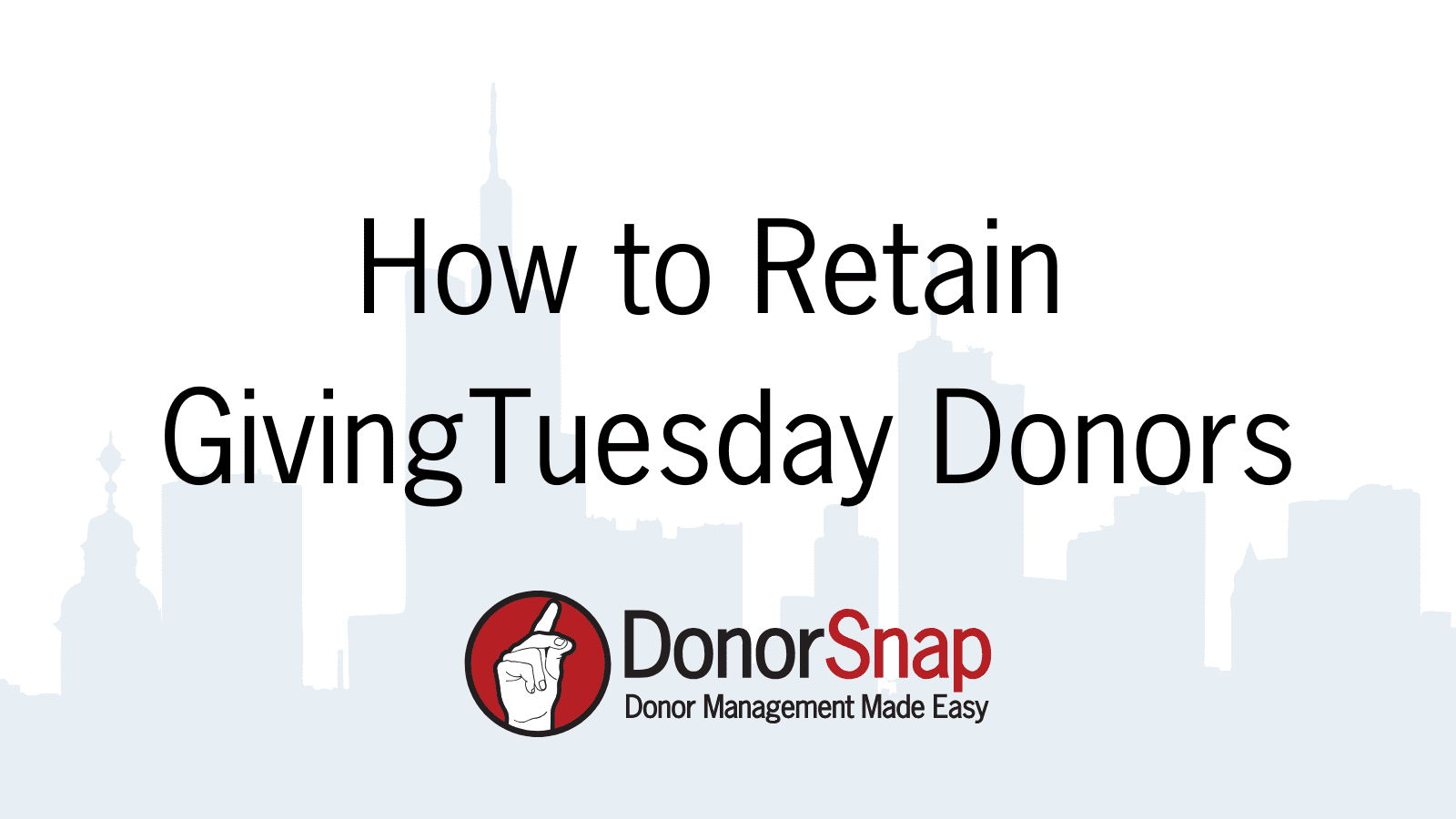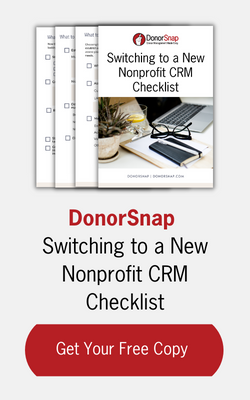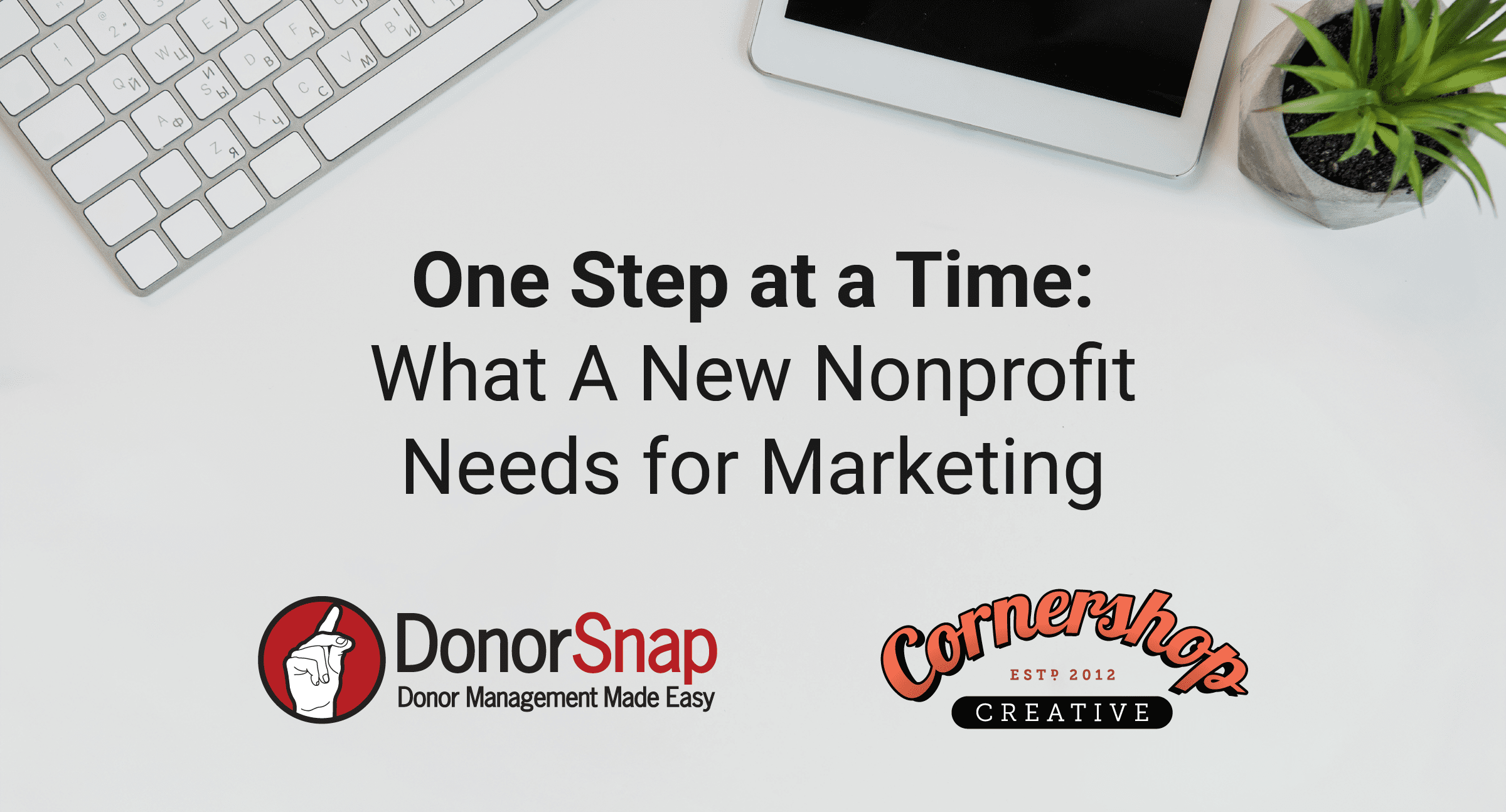Turning GivingTuesday Donors into Year-Round Champions
GivingTuesday is exhilarating. You watch donations roll in, celebrate milestones in real time, and end the day energized by your community’s generosity. But here’s the question that keeps development directors up at night: What happens on December 3rd?
For many nonprofits, GivingTuesday donors disappear almost as quickly as they arrived. Industry data shows that first-time donors have retention rates as low as 15-25%. That means for every 100 people who gave on GivingTuesday, you might lose 75-85 of them before they give again.
The good news? GivingTuesday donors aren’t inherently one-and-done. They chose your organization during one of the noisiest fundraising moments of the year. They’re already interested. What happens next is entirely up to you.
This guide walks you through a strategic, data-informed approach to transforming GivingTuesday supporters into lifelong advocates for your mission.
Why GivingTuesday Donors Are Different (And Why That Matters)
GivingTuesday donors often have different motivations than your typical supporters:
They’re impulse givers. Many donate in the moment, driven by social momentum, matching gifts, or a compelling social media post. They may not have deep knowledge of your organization yet.
They’re trend participants. Some people give on GivingTuesday because it’s GivingTuesday & they want to be part of the movement. Your specific mission might be secondary.
They’re testing the waters. Others use GivingTuesday as a low-stakes way to try out a new nonprofit before committing further.
They’re loyal—just not to you yet. Many GivingTuesday donors support multiple organizations that day. You’re competing for mindshare from day one.
Understanding these dynamics changes how you approach retention. You can’t assume GivingTuesday donors have the same connection as someone who attended your gala or volunteered for six months. You need to build that relationship intentionally.
The First 72 Hours: Your Make-or-Break Window
What you do immediately after GivingTuesday sets the tone for the entire relationship. This is not the time for generic thank-you templates.
Send a Personal, Immediate Acknowledgment
Timing matters. Send your thank-you email or letter within 24 hours, ideally the same evening or first thing December 3rd. Speed signals that you’re paying attention and that their gift mattered.
Make it personal. Use the donor’s name, reference their specific gift amount, and acknowledge whether they’re a new or returning supporter. DonorSnap makes this easy with mail merge fields that pull in donation details automatically.
Show immediate impact. Don’t just say “thank you.” Connect their gift to tangible outcomes: “Your $75 gift will provide art supplies for three students this semester.” Donors want to know their money is already at work.
Include a human touch. If possible, have your executive director or a program staff member sign the email or letter. Even better, include a photo of your team celebrating the day’s success or a quick behind-the-scenes video thanking supporters.
What NOT to Do in Your First Thank-You
- Don’t ask for another gift. Not yet. Let them enjoy being thanked first.
- Don’t overwhelm with information. Save the org history and comprehensive program descriptions for later.
- Don’t make it about you. Keep the focus on the donor and their impact, not your fundraising goals.
Segmentation: The Secret to Retention Success
Not all GivingTuesday donors should receive the same follow-up. Smart segmentation allows you to tailor your approach based on donor behavior, history, and giving potential.
DonorSnap makes segmentation straightforward. After GivingTuesday, create targeted lists based on these key criteria:
1. New vs. Returning Donors
New donors (gave for the first time) need relationship-building. They require education about your mission, proof of impact, and invitations to engage beyond giving.
Returning donors (gave before, including prior GivingTuesdays) need appreciation and deepening. They already know you, now reinforce why they should stay committed.
2. Gift Amount
Small donors ($1-$50) may have limited capacity right now but could grow over time, especially if they’re young professionals or first-time givers.
Mid-level donors ($51-$500) represent your sweet spot. They have capacity and interest. Focus heavily on this group.
Major donors ($500+) deserve personalized outreach—a phone call, handwritten note, or invitation to connect with leadership.
Segment in DonorSnap: Use gift range filters to create separate lists for each tier, then tailor your communication cadence and messaging accordingly.
3. Engagement Beyond Giving
Did they also attend an event this year? Volunteer? Sign up for your newsletter? Engage on social media?
Multi-touch supporters are already invested and easier to retain. They’re prime candidates for recurring giving or leadership roles.
Donation-only supporters need more touchpoints. Invite them to participate in ways that don’t require opening their wallet again immediately.
Segment in DonorSnap: Look at contact records holistically—not just donation history but also event attendance, volunteer hours, and other interactions captured in their profile.
4. Geographic Location
Local donors can be invited to in-person events, volunteer opportunities, and site visits.
Remote donors need virtual engagement options like webinars, online communities, or digital impact reports.
Segment in DonorSnap: Use city, state, or ZIP code filters to identify who’s nearby and who needs distance-friendly engagement.
Building Your 90-Day Retention Plan
The three months following GivingTuesday are critical. This is when you either build a relationship or lose the donor entirely. Here’s a week-by-week framework.
Week 1-2 (December 3-16): Gratitude & Impact
Goal: Make donors feel seen and show their money at work.
Actions:
- Send personalized thank-you (done immediately)
- Post GivingTuesday results publicly with photos, stories, and final totals
- For new donors, send a “Welcome to Our Community” email introducing your mission, impact, and ways to stay connected (use DonorSnap’s Automated Task Manager to trigger this automatically)
- Share a behind-the-scenes story or video update showing how you’re already using GivingTuesday funds
Sample Welcome Email (for new donors):
Subject: Welcome to [Organization Name]!
Hi [First Name],
We’re so glad you’re here. Your gift on GivingTuesday means more than you might realize—it’s the start of something meaningful.
We wanted to take a moment to introduce ourselves properly. [1-2 paragraphs about your mission, told through a story or client example.]
Here’s what happens next: Over the coming weeks, we’ll share stories of the people you’re helping, invite you to see our work firsthand, and keep you updated on the impact you’re making possible.
If you ever have questions or want to learn more, just reply to this email. We read every message.
Thank you for believing in this work.
[Signature]
Week 3-4 (December 17-31): Deepen Connection
Goal: Provide value without asking for money. Build trust and engagement.
Actions:
- Send an impact story featuring a client, volunteer, or program success (use real names and photos with permission)
- Invite new donors to follow you on social media or join a private Facebook group
- For local donors, invite them to an open house, volunteer orientation, or casual coffee meetup in January
- Send a year-end impact report or infographic showing 2025 accomplishments
Should you ask again during year-end?
This is the million-dollar question. The answer depends on segmentation:
New donors who gave under $100: Generally, no. Let them settle into the relationship. You’ll ask again in a few months.
New donors who gave $100+: Maybe, but carefully. If you have a compelling year-end match or urgent need, you can include them in your December appeals—but make sure your messaging acknowledges their recent GivingTuesday gift: “We know you just gave on GivingTuesday, and we’re so grateful. If you’re able to stretch and give again before December 31…”
Returning donors: Yes, cautiously. They’ve given before, so they understand your rhythm. Include them in year-end appeals but segment your messaging to thank them for GivingTuesday and invite (not pressure) an additional gift.
Pro tip: Use DonorSnap to exclude or modify messaging for recent donors in your year-end campaigns. A little customization prevents donor fatigue and shows you’re paying attention.
Month 2 (January): Engagement & Connection
Goal: Move beyond the inbox. Create two-way interactions.
Actions:
- Host a “New Donor Orientation” webinar or virtual coffee chat where leadership shares the vision and answers questions
- Send a survey asking what issues they care most about or how they’d like to stay involved (volunteer, advocate, attend events, etc.)
- Invite mid-level and major donors ($100+) to a small in-person or virtual gathering
- Feature a “Donor Spotlight” in your newsletter or on social media (with permission) to build community
Sample Survey Questions:
- What motivated you to give on GivingTuesday?
- Which of our programs are you most interested in learning about?
- How would you like to stay connected? (Options: Monthly email updates, volunteer opportunities, event invitations, advocacy actions)
- Would you be interested in a recurring monthly gift to provide sustained support?
Use DonorSnap’s custom fields to capture survey responses and further refine your segmentation.
Month 3 (February): Introduce Recurring Giving
Goal: Convert engaged one-time donors to monthly supporters.
Here’s the reality: monthly donors have retention rates of 80-90%, compared to 40-45% for annual donors. Converting even a small percentage of your GivingTuesday donors to recurring giving transforms your financial stability.
Who to target for recurring giving:
- New donors who opened multiple emails, attended an event, or responded to your survey
- Mid-level donors ($100-$500) who have capacity to give monthly
- Returning donors who’ve given 2+ times but aren’t yet recurring
How to make the ask:
Use DonorSnap to identify your target list, then send a dedicated email campaign focused on monthly giving. Frame it around sustainability and impact, not your budget needs.
Sample Recurring Giving Email:
Subject: Will you join our Sustainer Circle?
Hi [First Name],
Since you gave on GivingTuesday, we’ve been able to [specific impact]. Thank you.
We’re reaching out to a small group of committed supporters with an invitation to deepen your impact: Will you become a monthly sustainer?
Here’s why monthly giving matters: [Explain how predictable income allows you to plan better, serve more people, respond faster to needs, etc.]
Even a small monthly gift adds up:
- $10/month = $120/year = [tangible outcome]
- $25/month = $300/year = [tangible outcome]
- $50/month = $600/year = [tangible outcome]
You can start, pause, or adjust your gift anytime. And as a sustainer, you’ll receive [exclusive benefit: quarterly impact reports, invitations to special events, insider updates, etc.].
[Donate Button: “Become a Monthly Sustainer”]
We’d be honored to have you as part of this core group.
[Signature]
Recurring giving best practices:
- Make it easy to sign up (one-click checkout if possible)
- Offer suggested monthly amounts based on their original gift (if they gave $50 on GivingTuesday, suggest $15-20/month)
- Emphasize convenience and sustained impact, not obligation
- Provide a special designation like “Sustainer Circle” or “Monthly Champion” to create identity and belonging
Use DonorSnap to tag monthly donors with a special designation so you can steward them separately with exclusive communications and benefits.
Creating a Long-Term Stewardship Calendar
Beyond the first 90 days, retention requires consistent, meaningful touchpoints throughout the year. Here’s a sample calendar for stewarding GivingTuesday donors:
Quarterly (March, June, September):
- Impact updates tied to seasons or program cycles
- Invitations to events (virtual or in-person)
- Volunteer opportunities
- “Behind the scenes” content (staff profiles, facility tours, day-in-the-life stories)
Mid-Year (May/June):
- Mid-year impact report
- Personalized video message from leadership thanking supporters
- Survey or feedback request to show you value their input
Before GivingTuesday 2026:
- Personal outreach to previous GivingTuesday donors inviting them to give again or become ambassadors
- Exclusive “sneak peek” of your 2026 GivingTuesday plans
- Invitation to match or sponsor part of the campaign
Use DonorSnap’s Automated Task Manager to schedule these touchpoints in advance. Set up triggers so that, for example, new GivingTuesday donors automatically receive your welcome series, and returning donors get a different set of messages.
What About Lapsed Donors?
Despite your best efforts, some GivingTuesday donors will drift away. That’s normal. But don’t give up on them entirely.
Create a “Lapsed GivingTuesday Donor” segment in DonorSnap: Anyone who gave on GivingTuesday 2024 but hasn’t given since.
Re-engagement campaign (September/October 2026):
- Acknowledge the gap: “We haven’t heard from you in a while, and we miss you.”
- Remind them of their impact: “Last GivingTuesday, you gave $X and helped us [specific outcome].”
- Share what’s new: “Here’s what’s happened since then…”
- Make a soft ask: “Would you consider joining us again this GivingTuesday?”
Even a 10-15% reactivation rate among lapsed donors is a win.
Measuring Success: Key Retention Metrics to Track in DonorSnap
You can’t improve what you don’t measure. Track these metrics quarterly:
Donor retention rate: (Number of GivingTuesday 2025 donors who give again by December 2026) ÷ (Total GivingTuesday 2025 donors) × 100
First-to-second gift conversion rate: (Number of new GivingTuesday donors who make a second gift within 12 months) ÷ (Total new GivingTuesday donors) × 100
Monthly giving conversion rate: (Number of GivingTuesday donors who become monthly givers) ÷ (Total GivingTuesday donors) × 100
Engagement rate: (Number of donors who attended an event, volunteered, or responded to a survey) ÷ (Total GivingTuesday donors) × 100
Average gift growth: Compare the average second gift to the average GivingTuesday gift. Are donors growing their support?
DonorSnap’s reporting features make it easy to pull these numbers and visualize trends over time. Run reports quarterly and adjust your strategy based on what’s working.
The Biggest Retention Mistakes to Avoid
Even with the best intentions, nonprofits sabotage their own retention efforts. Watch out for these common pitfalls:
Asking too soon or too often. Bombarding new donors with asks before you’ve built trust creates donor fatigue. Space your appeals and prioritize relationship-building first.
Generic communications. If your emails could be sent by any nonprofit, you’re not creating connection. Use names, reference specific gifts, and tell real stories.
Ignoring small donors. That $10 donor might be a college student who becomes a major donor in a decade. Steward everyone well.
Forgetting to say thank you (again and again). You can never thank donors too much. Build gratitude into every touchpoint.
Failing to close the loop on impact. If donors never hear how their gift was used, they assume it didn’t matter. Report back early and often.
Not using your data. DonorSnap gives you powerful segmentation and automation tools. Use them. Flying blind wastes time and loses donors.
Final Thoughts: Retention Is a Long Game
Turning GivingTuesday donors into lifelong supporters won’t happen overnight. It requires patience, consistency, and genuine care for the people who support your mission.
But here’s the reality: Acquiring new donors is expensive and exhausting. Retaining the ones you already have is the most cost-effective fundraising strategy available. When you increase donor retention by even 10%, you dramatically increase lifetime value and financial sustainability.
Your GivingTuesday donors took a chance on you. Now it’s your turn to show them they made the right choice.
Start with segmentation, build a 90-day plan, communicate with intention, and measure what matters. Do this well, and next December, you won’t just be celebrating GivingTuesday—you’ll be celebrating a year of deepened relationships, increased loyalty, and a community of supporters who are truly invested in your mission.




